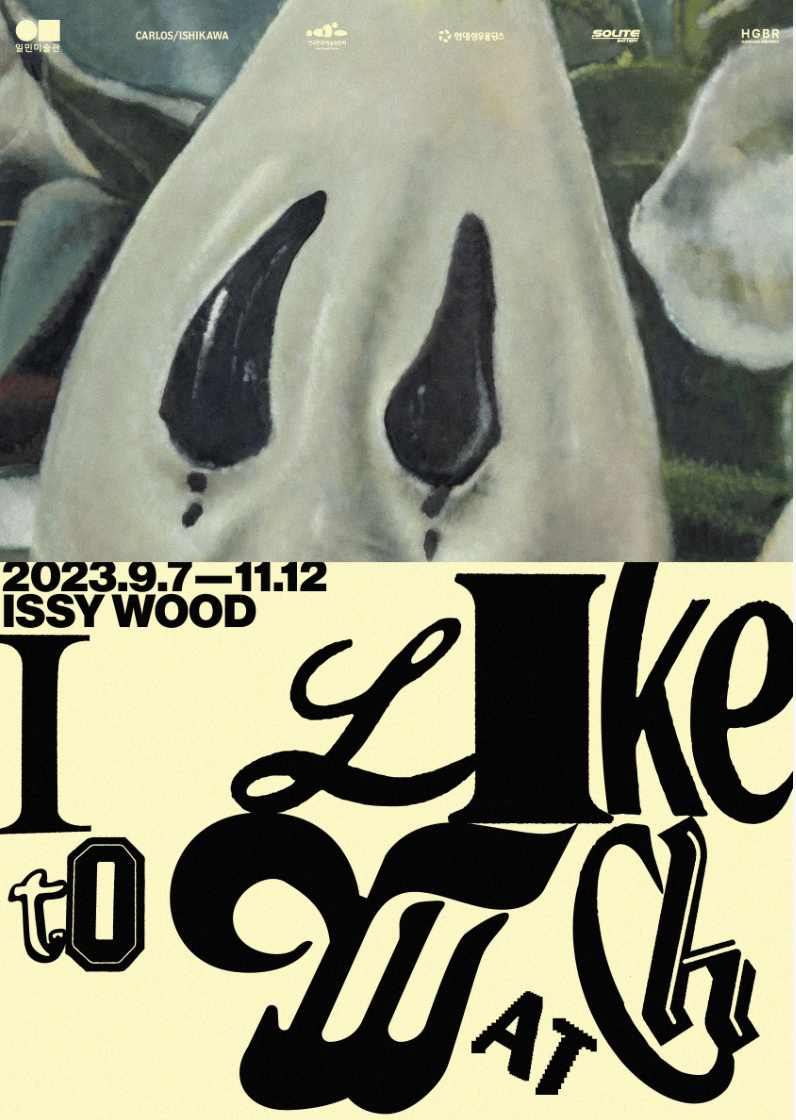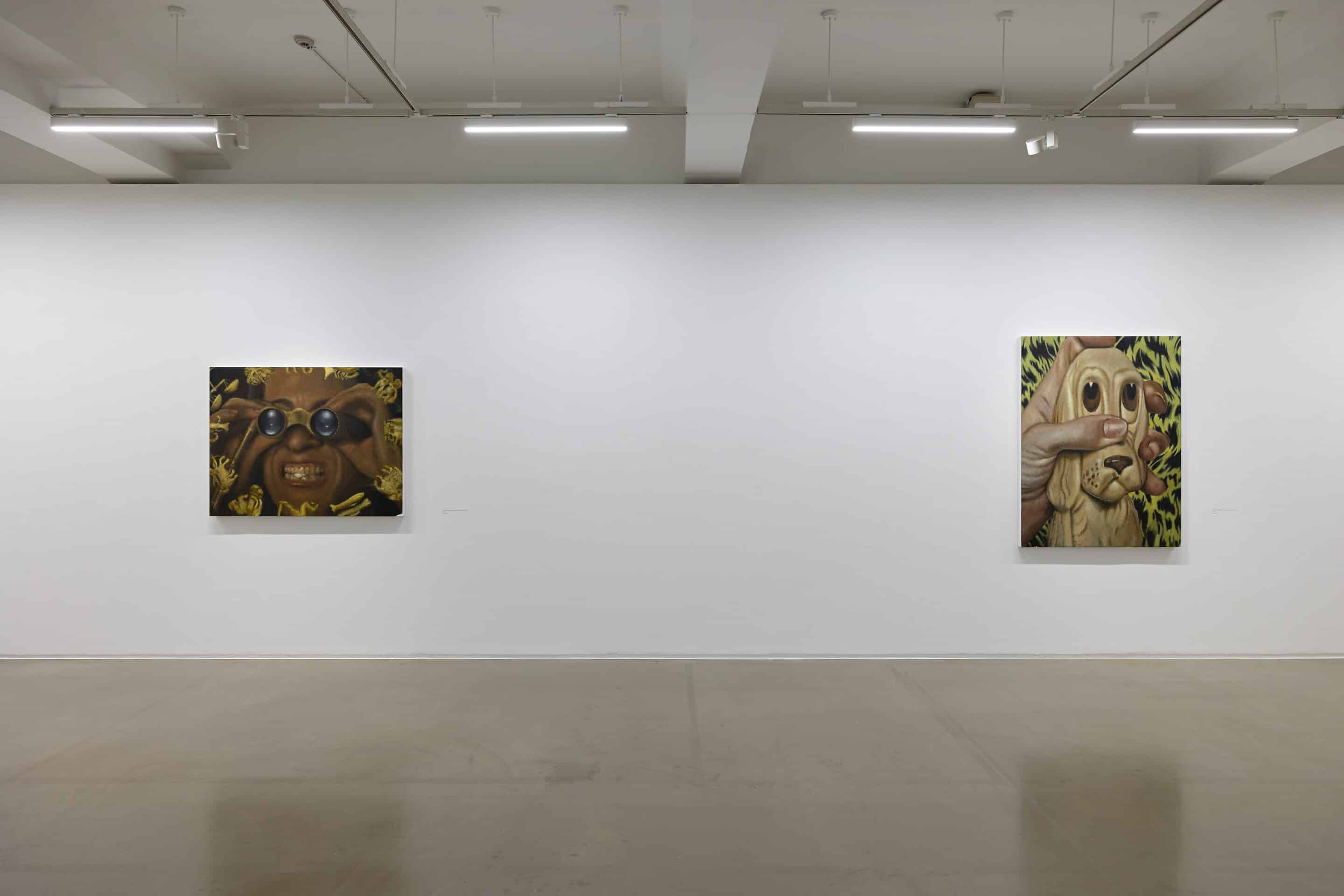
| Period| | 2023.09.07 - 2023.11.12 |
|---|---|
| Operating hours| | Tue-Sun 11:00 - 19:00 |
| Space| | Ilmin Museum of Art/Seoul |
| Address| | 152, Sejong-daero, Jongno-gu, Seoul, Republic of Korea |
| Closed| | Mon |
| Price| | General 9,000 won (7,000 won for students under 24 years old) |
| Phone| | 02-2020-2050 |
| Web site| | 홈페이지 바로가기 |
| Artist| |
이시 우드
|
정보수정요청



|
|
Exhibition Information




Issy Wood portrays the contemporary world to be simultaneously harmonious yet in disarray in her rather unsettling representations. Wood persistently follows and examines a range of subjects—antique artifacts, luxury goods worshiped by younger generations, sexual innuendos, and bizarre personal experiences—tracking them down to what compels her to depict them and ultimately synthesizing her findings in the form of paintings. Her subjects appear to belong to a “noble pawnshop,” a realm of dualities, kindling both desire and shame, simultaneously sensual and pitiable, dubious either as documentation or meme. Wood’s paintings, often imbued with dark and lowbrow humor, navigate between the infinitely unraveling reality and fleeting daydreams like anonymous direct messages on social media. This mode of painting represents present-day anxieties that stem from the overabundance of choices and various extremisms that spread like viruses, while incorporating art historical motifs rooted in diverse cultural sources. Wood’s work, within contemporary painting, alludes to a new type of realism that embraces surrealism. In her work, Wood speaks of the rich potential of overly symbolic objects/events in conjunction with subjective affect. Typically, surrealism delves into the unconscious that governs the artist’s mind, into the chaos of potentiality, searching for whatever is repressed by various defense mechanisms, whether meaningful or valueless. Then, it displays the discoveries within the framework of a larger collective imagination. In contrast, Wood assembles and iconifies the images found in her surroundings yet in a surprisingly indifferent manner or with a vulnerable openness. Wood conjures an excess of classical styles in this process—Hellenism, Gothic, and Baroque, etc.—which implies that her interest lies in a “slippery sublimity” caused by sheer overabundance rather than a covert unconscious or mysticism. The sudden angst that overwhelms her from time to time arises out of everyday threats—the climate crisis, cultural regression, the art world, and vacuous political correctness—and, more than that, the excess of images and styles emerging from these concrete events. And here, Wood’s paintings uniquely re-present the leaps and failures in the dense interaction between the artist and the external world instead of her repressed unconscious. Concurrently, the expression of observation, analysis, and emotions in this process yields a similar effect to writing in that it adopts the first-person psychological perspective, as indicated by the exhibition title. Furthermore, Wood’s other genuine creative outlets, such as blogging, composing music, and directing music videos, underpin the basis of her paintings, similar to REM sleep or lucid dreams (to put a spin on surrealist dream metaphors). Wood’s uniquely spoken realism hints at the renewal of painting as a more progressive art form that hinges on figuration and expression at the same time. Wood draws from a wide range of historical European references, spanning from 14th-century medieval to 19th-century neoclassical paintings. Yet, technically, she creates a peculiar “anachronism” by blurring the surface, controlling the light as if applying a photo filter, and using heavy velvet as the substrate. The current trend toward materiality in painting is a significant aspect of contemporary art. Wood extends this tendency to explore the relationships and hierarchies of objects and events and to examine the meaning of painting in today’s world. This type of exploration muddies the conventional attempts to reduce painting to binaries of form and content or spatiality and flatness. More than that, it distances today’s painting from its precedents, which were dedicated to the destruction or “expansion” of the rules of painting. (Source = Ilmin Museum of Art)
